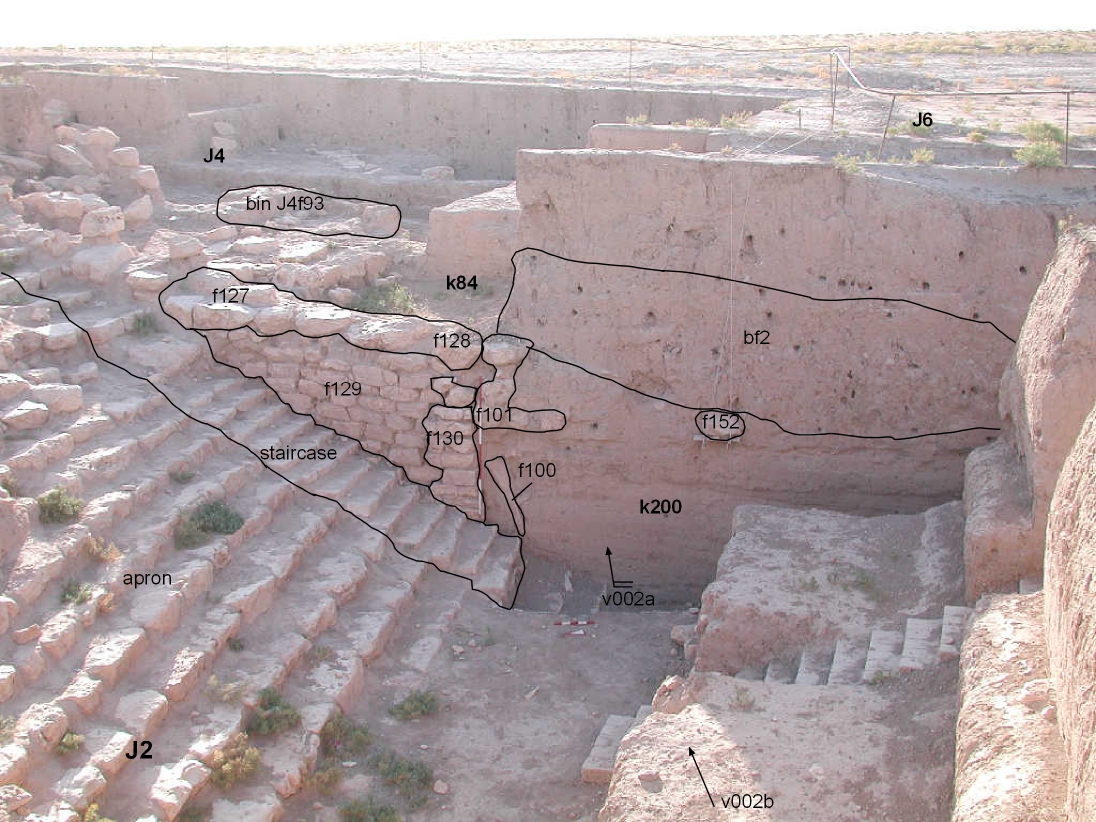Loose materials are accumulations and fills bounded by structures and installations. They fill a defined space or cover structures. The definition and explanation of loose material can be found in the grammar. In J6 we have accumulations, fills of pits, dumps, the collapse of stones and the collapse of one or several mudbrick structures.
Back to top: Loose materials
Accumulations
The structures and installations we discovered in J6 were covered by accumulations. The first 2m are windblown soil accumulations and to some extent accumulations due to human activity in the neighborhood, with few stones collapsed from the structures of the Temple Terrace. The area is abondoned.
The second type of accumulation is the soil that gathered through the Plaza during the Mittani period, in a short time lass, when the Temple Terrace, the Plaza and the area next to the houses to the south of the Plaza in Unit C2 were intensively used and the soil grew faster (for this topic see Plaza in Unit J1). The accumulations are interrupted by floors, structures and installations. See layering or gradual build-up for a description of the accumulations in terms of emplacement.
During the Third Millennium the Plaza was kept cleaner. We encounter in J6 south of the eastern staircase flank wall a sereis of floors covered by thin accumulations.
This soil has been accumulated as a result of a combination of human activity and natural processes, with soil being transported from far away by the wind and then deposited here. During our excavations, we documented several sandstorms. Sandstorms must have occurred in ancient times too, even though the climate in the region was different to how it is today. There was much more vegetation and it was less dry, but sandstorms still occurred (Deckers et al. 2010).
Back to top: Loose materials
Fills
The pits we found east of the staircase wall were possibly storage pits, trash pits or ritual pits. Their function remains uncertain. The fill of a8 and pit 2 contained a lot of trash and the soil was loose and ashy. The fill of a1 was a loose soil with few pottery sherds and broken bricks.
Back to top: Loose materials
Dumps
We recorded two two dumps: the first in time sequence is a dump of loose red soil with a massive presence of early EDIII sherds, kiln waste, a broken tannur f200. It was discarded on top of wall f227. The dump is one of the first activities found in J6.
The second dump occurs much later in time sequence. It is a middle Mittani event which was recorded in all the area east of the staircase. Dump 1 is a loose soil with a massive presence of pottery sherds and small stones with few large stones. It seems to be a discard of material, possibly to level the area after the brickfall.
Back to top: Loose materials
The great brickfall
The brickfall was firstly recorded in the eastern section of the trench (C2-A79 see Bianchi et. Al. 2014, Beilage 7). It appeared to be a 1, 1.5m thick layer of melted and complete disorganized bricks. The brickfall covered the southern half portion of Units J6 and J2. The source of the brickfall has to be searched to the southeast of J6. It must have been one large building which collapsed and transported a rich amount of ceramics and artefacts. The pottery analyzed within was Mittani and the brickfall covers Early Mittani strata.
|
|
 |
Back to top: Loose materials